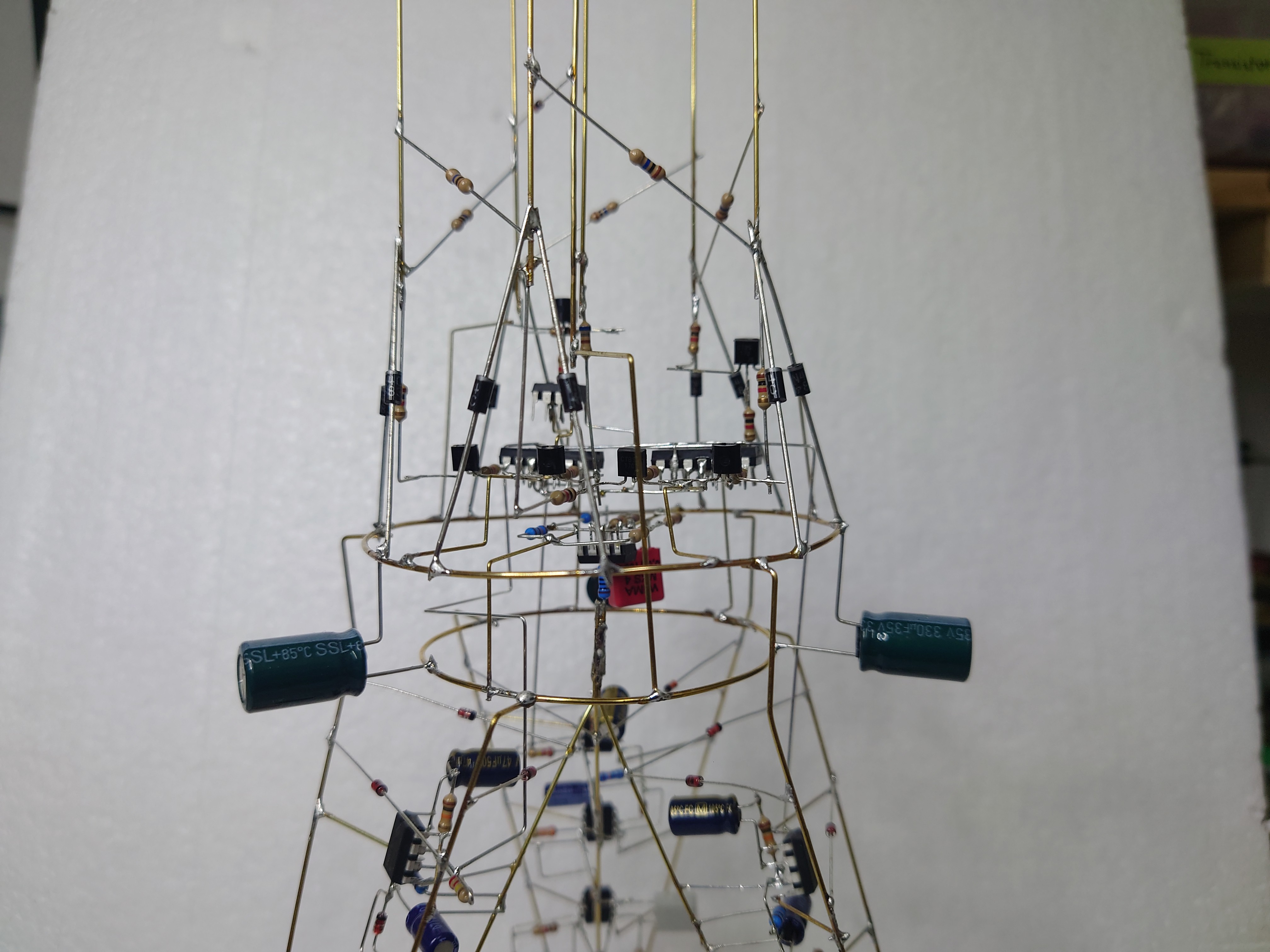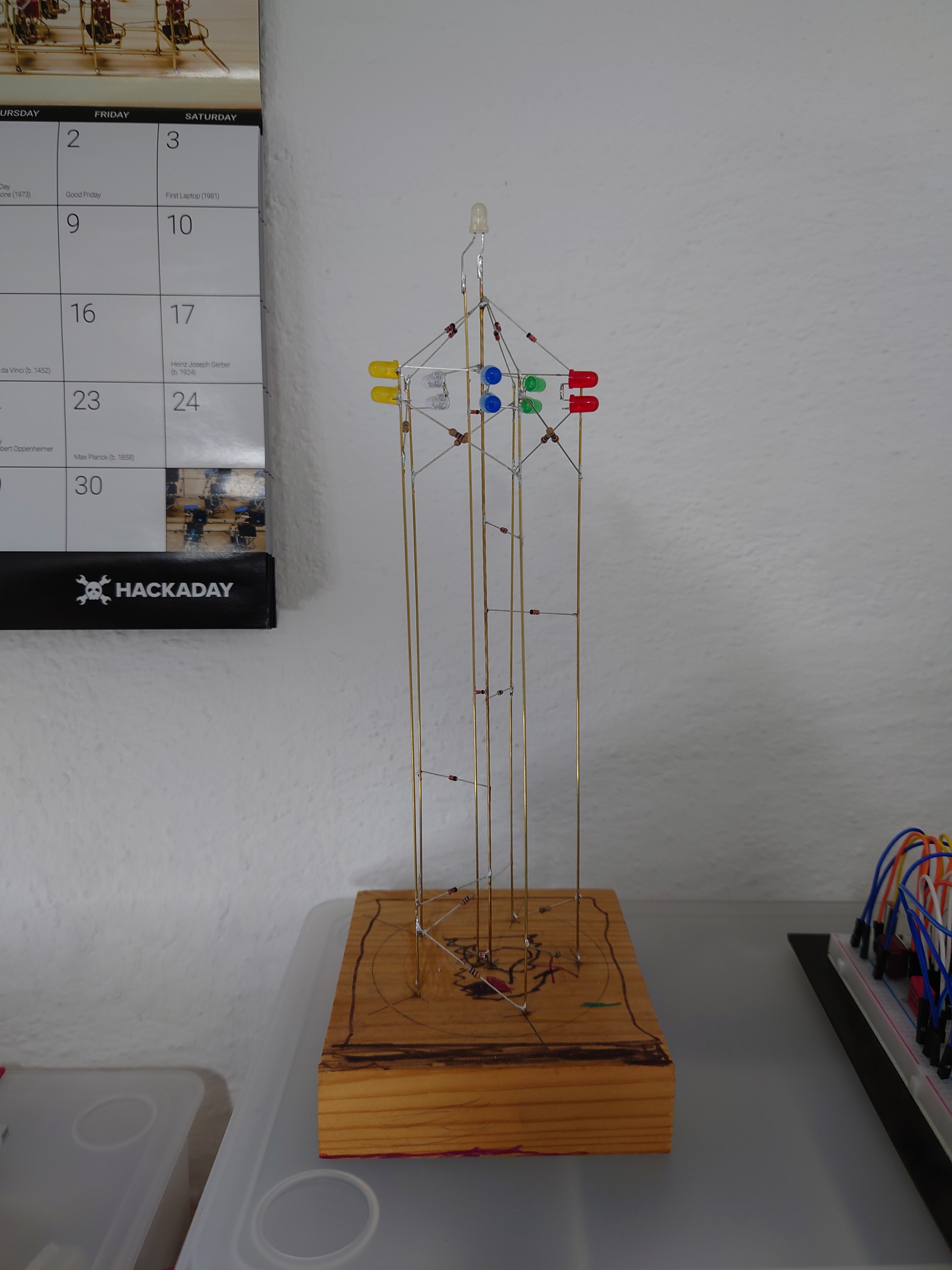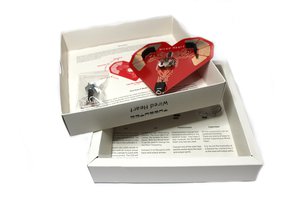When I read about the op amp challenge and there about chaotic circuits, I thought that I should build another sculpture.
I remembered how it was to sail the baltic sea at night and navigate using light houses. But now, with GPS,... they appear somehow superfluous. What would happen if one of them got mad...?
So the idea of using a chaotic circuit as the basis for the sculpture was born. I found Sprott's chaotic jerk circuit and thought that it was reasonable simple. And to make it a bit more "chaotic", I decided to use it three times in my sculpture, as my lighthouse has three legs to have a stable base. With slightly different time constants in each of the legs.
Since the circuit itself oscillates somewhere in the range of 100Hz I wanted to make use of the envelope of the oscillation for my blinking. So I incorporated a peak detector to somehow get it. Some signal conditioning and in the end generating a PWM signal for the LEDs. That's it. Sounds easy, but took me quite some time to play around with everything on a breadboard to find out suitable values for the resistors and capacitors.
In total it's 46cm high.
Watch the videos in the files section to see it in all its beauty!
P.S. The component list is not correct for the resistors, caps and diodes. I just mentioned the values. Counting can be done based on the schematics. And I used many of the 1N41418s and 10Ms just for rigidity.
 MaBe42
MaBe42














 Kelly Heaton
Kelly Heaton
 Lithium ION
Lithium ION
 tobi tubbutec
tobi tubbutec
 Zeppelin Design Labs
Zeppelin Design Labs
Thanks to both of you!